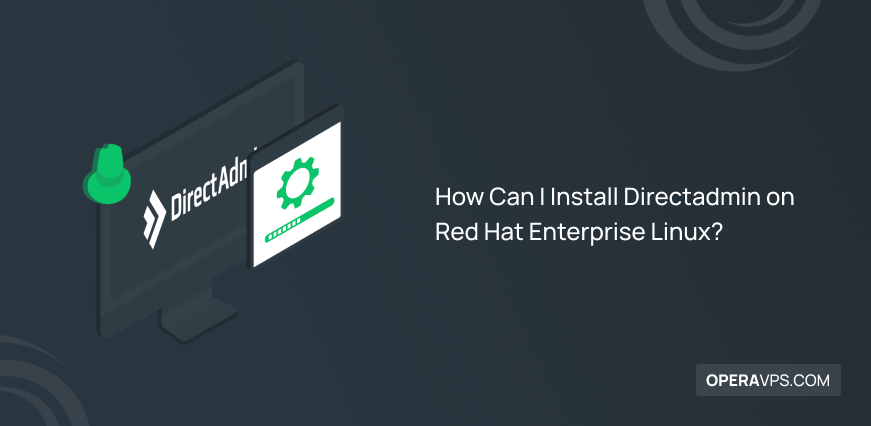Ashley B.
Content Writer (Hi! I’m Ashley, a Linux Administrator with a passion for making Linux simpler and more accessible for beginners. Since 2021, I’ve been writing friendly, practical guides at OperaVPS to help users install software, use the command line, and get comfortable with their VPS. Linux doesn’t have to be intimidating. and I’m here to show that anyone can learn it with the right support and a little curiosity.

Installing CentOS Step by Step Guide
Installing CentOS involves using bootable media to start the process and selecting options like language, disk partitions, and software. Complete the guided steps to finish setup and reboot into CentOS. 🤖AI Overview: Installing CentOS uses bootable USB or DVD media to launch the installer where you configure settings such as language, keyboard, time, disk partitioning, […]

10 Best Linux Firewall Solutions for Network Security
A Linux firewall controls network traffic to protect systems from unauthorized access and attacks. It filters packets to block harmful connections, enhancing security for Linux environments. 🤖AI Overview: Linux Firewall is an essential tool for monitoring and controlling network traffic on Linux systems. It helps block unauthorized access and protects against malware and hacking attempts. […]

Setup FirewallD in CentOS Quickly and Easily
Setup FirewallD in CentOS configures a dynamic firewall manager that controls network traffic through zones and services. Install, enable, and configure FirewallD to secure your system by managing network access effectively. 🤖AI Overview: Setting up FirewallD in CentOS involves activating and managing the system’s default firewall tool to control network traffic, enhance security, and configure […]

Disable IPv6 in Linux: Step-by-Step Guide
Disable IPv6 in Linux by editing system configuration files or GRUB settings to turn off the IPv6 protocol. This can be done on Debian-based and Red Hat-based systems with a reboot to apply changes. 🤖AI Overview: Disabling IPv6 in Linux involves configuring system files to switch off IPv6 either temporarily or permanently. Debian-based systems typically […]

How to Create FTP Server in Ubuntu Linux
Create FTP server in Ubuntu Linux by installing and configuring vsftpd. This guide covers user setup, firewall rules, and service management for secure file sharing. 🤖AI Overview: Setting up an FTP server in Ubuntu Linux involves installing the vsftpd package, configuring user permissions, and enabling necessary firewall ports. This process facilitates efficient and secure file […]

How to Connect to OpenVPN on Any Device
Connect to OpenVPN by installing the client, importing the configuration file, entering credentials, and activating the connection. This secures your internet traffic on Windows, Linux, macOS, Android, and iOS devices. 🤖AI Overview: Connect to OpenVPN by installing an OpenVPN client and importing a configuration file containing server details and credentials. This process works across major […]

Install Apache Hadoop on Windows
Hadoop is one of the most popular open-source frameworks for big data processing. While it’s primarily designed for Linux systems, many developers and students want to install Apache Hadoop on Windows for testing, learning, or development purposes. In this guide, you will learn how to set up Hadoop in a single-node cluster on Windows 10 […]

Install Magento on Ubuntu in 10 Easy Steps
Install Magento on Ubuntu by preparing your system, installing PHP, Nginx, MySQL, Elasticsearch, and Composer, then downloading and configuring Magento. Secure your site with SSL for safe online store operations. 🤖AI Overview: Install Magento involves setting up the Magento e-commerce platform on an Ubuntu server. This process includes installing essential software like PHP, MySQL, Nginx, […]

Secure SSH Server with Top 10 Security Practices
Secure SSH Server means protecting Linux servers using SSH protocol for encrypted remote access. Key steps include changing default port, disabling root login, using key authentication, limiting login attempts, and restricting IP access for stronger security. 🤖AI Overview: A Secure SSH Server protects remote Linux access by ensuring encrypted communication between client and server. It […]

How to Create VPN Server Using the Best Operating System
To create VPN server using protocols like OpenVPN or SSTP, Ubuntu 22.04 LTS and Windows 10/11 are top operating systems. 🤖AI Overview: Creating a VPN server involves setting up a secure virtual network for remote access and data protection. Ubuntu 22.04 LTS and Windows 10 or 11 are widely recommended operating systems for this purpose. […]

Install Directadmin on Red Hat Enterprise Linux Easily
Install Directadmin on Red Hat Enterprise Linux by updating the system, disabling SELinux, setting the hostname, installing dependencies, running the setup script, and accessing the control panel on port 2222. 🤖AI Overview: Installing Directadmin on Red Hat Enterprise Linux provides a user-friendly web hosting control panel for managing websites and server tasks. The process requires […]

How to Change Linux Password Easily and Securely
To change Linux password, you should use the “passwd” command in the terminal or via SSH login. This process secures your account and applies to most Linux distributions like Ubuntu, CentOS, and Debian. 🤖AI Overview: Changing the Linux password is a fundamental security task that involves using the passwd command from the command line or […]
